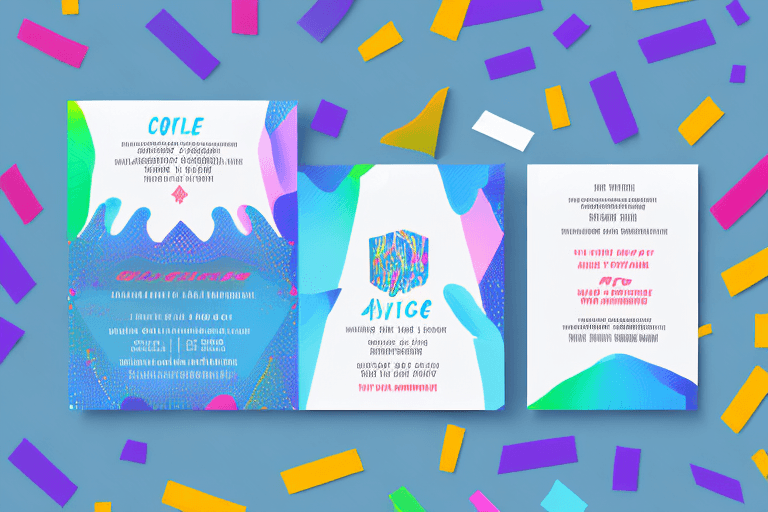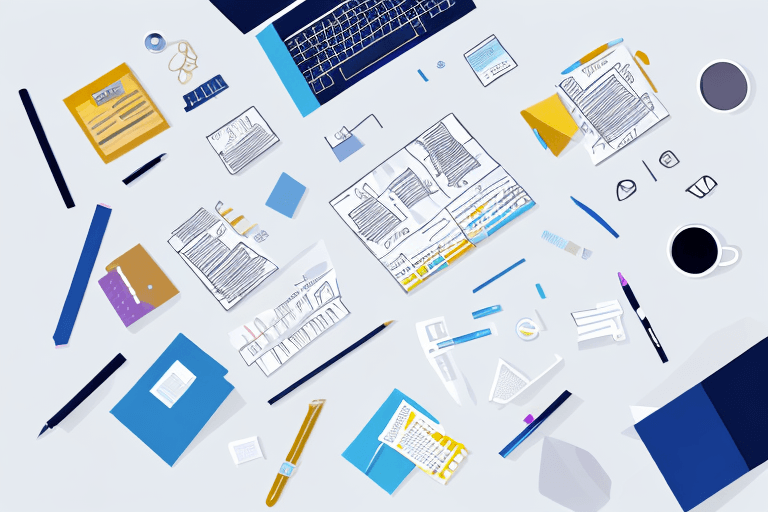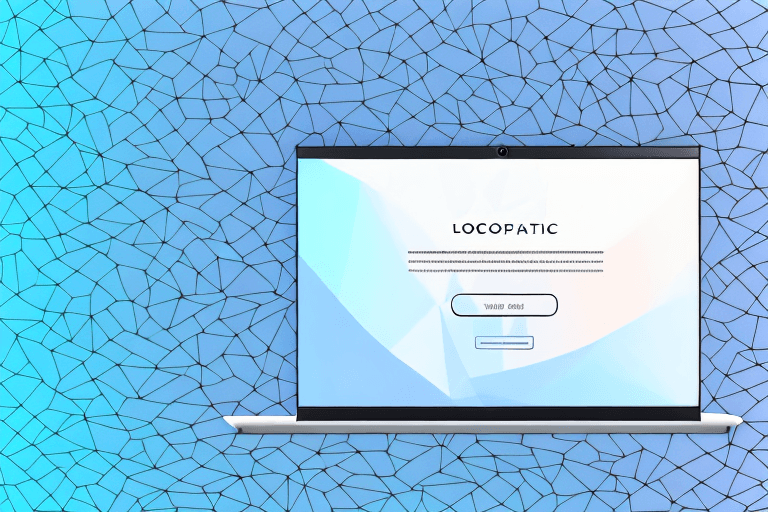Event marketing is crucial to the success of any event. But with countless events happening every day, how can you stand out from the crowd? One effective way is by using email marketing. In this article, we'll explore how to create an effective event email template that will help you achieve your goals.
Understanding the Importance of Event Email Templates
Email marketing has a higher ROI than any other marketing channel. That's because email is a direct and personal way to reach your audience. Event email templates can make or break your event promotion efforts. They can either grab your audience's attention or end up in the spam folder. That's why it's crucial to understand what makes an effective event email template.
The role of email marketing in event promotion
Email marketing is a powerful tool that can help you promote your event, increase attendance, boost awareness, and drive early registration. With the right event email template, you can reach your audience before, during, and after the event.
Before the event, you can use email marketing to generate buzz and excitement. Send out a save-the-date email to your list, and follow up with reminders as the event draws near. You can also use email to share sneak peeks of what attendees can expect, such as speaker bios, session topics, or special promotions.
During the event, email can be used to keep attendees informed and engaged. Send out daily recaps, highlight key speakers or sessions, and share behind-the-scenes photos and videos. You can also use email to encourage attendees to share their experiences on social media, or to participate in surveys or polls.
After the event, email can be used to thank attendees for coming, share resources and materials from the event, and solicit feedback. You can also use email to promote upcoming events or to nurture leads that were generated at the event.
Key elements of a successful event email campaign
A successful event email campaign includes a well-designed event email template, a compelling subject line, and engaging email content. It's also important to segment your audience and personalize your emails.
When designing your event email template, keep in mind that it should be visually appealing, easy to read, and on-brand. Use images and graphics to break up text, and make sure your call-to-action is clear and prominent.
Your subject line should be attention-grabbing and relevant to the content of your email. Avoid using spammy words or phrases, and keep it short and sweet.
Engaging email content is key to keeping your audience interested and motivated to take action. Use a conversational tone, and focus on the benefits and value of attending your event. Personalize your emails by using your recipient's name and other relevant information.
Finally, segmenting your audience allows you to send targeted and relevant emails to specific groups. You can segment your list by demographics, interests, or behavior. This ensures that your emails are more likely to be opened and acted upon.
Defining Your Event Email Goals
Before creating an event email template, it's essential to define your event email goals. What do you want to achieve with your event email campaign? Here are some common event email goals:
Increasing event attendance
You can use event email marketing to promote your event, showcase its features and benefits, and encourage people to attend. However, to increase attendance, you need to make sure that your event is worth attending. You can achieve this by offering exciting activities, inviting renowned speakers, and providing valuable networking opportunities. Additionally, you can use email templates to provide attendees with a sneak peek of what to expect at the event, such as a list of exhibitors, a schedule of activities, and a map of the event venue.
Boosting event awareness
Event email templates can help increase your event's visibility and create buzz before the event. However, to achieve this, you need to ensure that your emails are engaging and shareable. You can achieve this by using striking visuals, catchy headlines, and concise copy. Additionally, you can encourage your subscribers to share your event emails with their networks by including social sharing buttons in your emails.
Another way to boost event awareness is by leveraging the power of influencers. You can partner with influencers in your industry and ask them to promote your event to their followers. You can also invite them to attend your event and provide them with exclusive access to interviews and backstage activities. This way, they can create buzz around your event and attract more attendees.
Encouraging early registration
Early registration helps event organizers plan better and allows attendees to grab the best seats. You can use event email templates to create a sense of exclusivity and urgency and encourage people to register early. For instance, you can offer early bird discounts, limited-time offers, and exclusive perks to those who register early.
However, to encourage early registration, you need to ensure that your event emails are targeted and personalized. You can achieve this by segmenting your email list based on the subscriber's interests, location, and behavior. This way, you can send targeted emails that resonate with your subscribers and encourage them to take action.
Moreover, you can use event email templates to provide registrants with all the information they need to prepare for the event, such as travel information, accommodation options, and a list of recommended restaurants and attractions in the area.
Crafting a Compelling Subject Line
A compelling subject line is crucial to getting your event email noticed. However, it's easier said than done. With so many emails flooding people's inboxes, it's essential to make your subject line stand out. Here are some tips to help you craft a killer subject line:
Using Action Words and Urgency
Words are powerful, and the right ones can create a sense of excitement and urgency in your audience. Using action words like "Join us," "Discover," or "Experience" can make your audience feel like they're missing out on something if they don't open your email. Urgent language like "Last chance" or "Limited time" can also create a sense of urgency and encourage people to act quickly.
For example, instead of using a generic subject line like "Upcoming Event," try something like "Join us for the most anticipated event of the year." This subject line not only creates a sense of excitement, but it also communicates that this event is a must-attend.
Personalizing the Subject Line
Personalization can help increase open rates and engagement. When you personalize your subject line, you're showing your audience that you understand their needs and interests. Use your audience's name, location, or other personal details to make the email more relevant.
For example, if you're hosting an event in New York City, try using a subject line like "John, don't miss out on our exclusive event in NYC." This subject line not only uses the recipient's name but also communicates that this event is exclusive and worth attending.
Testing and Optimizing Subject Lines
Testing and optimizing your subject lines can help you improve open rates and engagement. Use A/B testing to test different subject lines and see what works best for your audience. A/B testing involves sending two different versions of an email to a small group of people and seeing which version performs better.
When testing subject lines, try changing one element at a time, such as the length, tone, or personalization. This will help you identify what works best for your audience. Once you've found a winning subject line, use it as a template for future emails.
In conclusion, crafting a compelling subject line takes time, effort, and creativity. But with the right words and personalization, you can create a subject line that stands out in a crowded inbox and encourages people to attend your event.
Designing an Engaging Email Layout
The design of your event email plays a crucial role in attracting and engaging your audience. An engaging email layout can help you increase your open rates and click-through rates, leading to a successful event. Here are some tips to help you create an engaging email layout:
Choosing the right email template
Choosing the right email template can help you create a consistent and professional look for your event. A well-designed email template can also save you time and effort. There are many email templates available online, but it's important to choose a template that resonates with your brand and your audience. For example, if you're organizing a music festival, you may want to choose a template that reflects the energy and excitement of your event.
Incorporating visual elements
Incorporating visual elements, such as images and videos, can help you grab your audience's attention and increase engagement. Use high-quality visuals that showcase your event and its features. For example, if you're organizing a food festival, you can include mouth-watering images of the dishes that will be served at the event. Videos can also be a great way to showcase your event, especially if you have footage from previous events. However, make sure that your visuals are relevant and add value to your email.
Ensuring mobile-friendliness
Most people access emails on their mobile devices. That's why it's crucial to ensure that your event email template is mobile-friendly. Use a responsive design that adapts to different screen sizes and test your email on multiple devices. You can also consider using a mobile-first design approach, where you design your email for mobile devices first and then adapt it for desktop devices. This can help you create a better user experience for your mobile audience.
In conclusion, designing an engaging email layout requires careful consideration of your audience, your brand, and your event. By choosing the right email template, incorporating visual elements, and ensuring mobile-friendliness, you can create an email that captures your audience's attention and drives engagement.
Conclusion
In conclusion, email marketing is a powerful tool for event promotion, and an effective event email template is the key to success. By understanding your audience, defining your goals, crafting a compelling subject line, and designing an engaging email layout, you can create an event email that stands out and drives results. Use the tips and strategies outlined in this article to create an effective event email template and take your event marketing to the next level.




